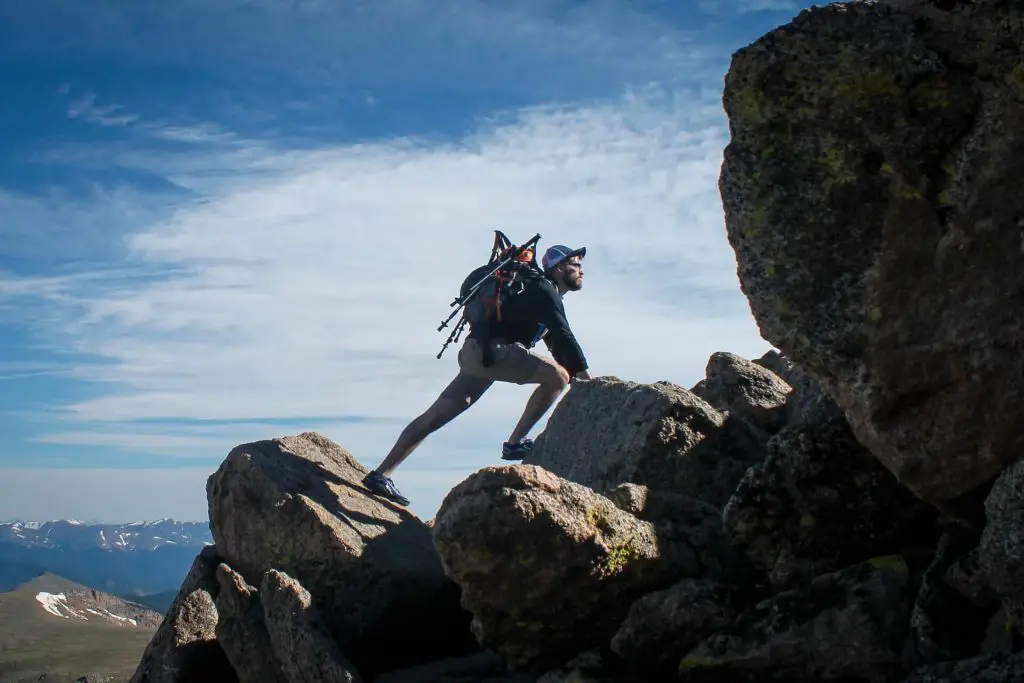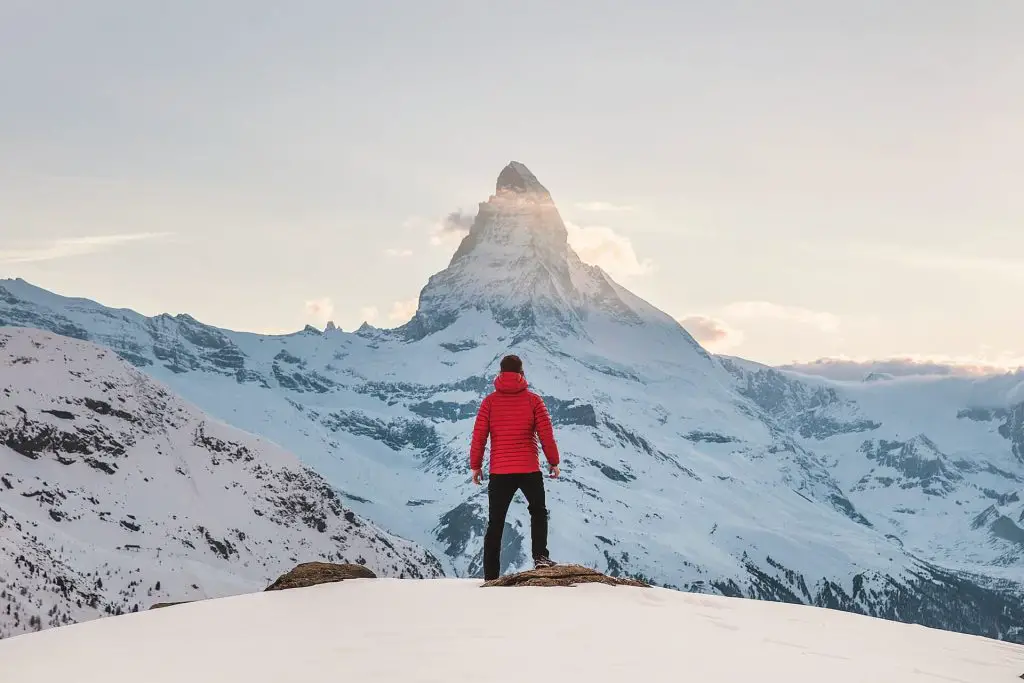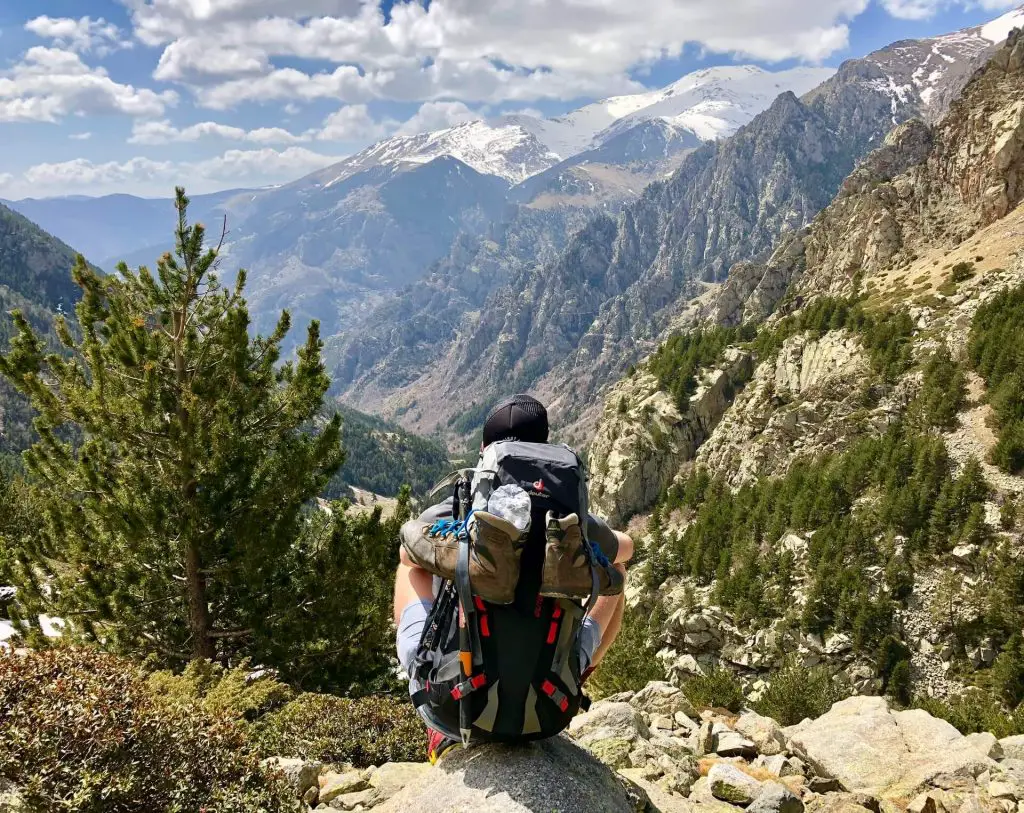
The beautiful scenery and inspiring sights hikers will experience aren’t always sunshine and rainbows. Hiking also presents many dangers from wildlife, random weather, hair-raising spots on the trail, and more. The great outdoors provides many wonderful experiences mixed with some element of danger, so how can you be prepared and hike safely by yourself?
It is safe to hike alone as long as you research your trail, bring a layered clothing system, proper nutrition to keep you fueled, share your hiking itinerary, and know what to do if you encounter wildlife or an outdoor emergency.
I have been hiking for over a decade and have run into numerous obstacles and challenges while solo hiking, but bringing the right gear and being ready for various scenarios has helped me keep my cool and hike safely. Let’s dive deeper into some of the dangers of hiking and what you can do to prepare so you can hike safely and confidently.
How Dangerous is hiking alone?

If you’ve seen hiking in movies or television shows then you might be worried about getting lost or trapped in a canyon, however there are other things to watch out for on your next outdoor adventure such as exposure to weather changes, wildlife, and mismanaged navigation.
Let’s first go over common scenarios that you could possibly encounter and in the next section we will go over what you can do to avoid these situations and how you can be prepared for them in case you are in these scenarios.
Weather and Exposure
One of the most dangerous yet subtle things of hiking is exposure to changing weather conditions. This usually isn’t something covered in movies, but can sneak up on you if you aren’t prepared. If you’re out hiking and the temperature suddenly dips or if the forecast called for sunny skies and rain comes out of nowhere then you could be in trouble. Getting wet and staying wet in cold conditions could lead to hypothermia. /p>
On the flipside if you’re hiking during the summer and temperatures are too hot with little shade than you can possibly experience heat stroke or heat exhaustion. One minute you will be feeling fine and the next you could be hit with heat stroke. There are ways to prepare for both the cold and heat and to keep you protected which we will go over in the next section.<
Wildlife
The next dangers of hiking is encountering wildlife. Encounters with wildlife can be rare, however they are still something you should try to be prepared for. Depending on where you are hiking the type of wildlife you could possibly encounter will vary.
If you are hiking locally then you can encounter wild snakes, poisonous bugs, and more. If you venture off to national parks then you can encounter bears, deer, wolves, and even mountain lions. Since you are walking around in the wilderness you will likely encounter a number of these animals throughout the years.
Navigation
One of the biggest concerns for hikers is getting lost. One missed turn or one misstep and you can be on a completely wrong path. When you have reached the summit and on the way back to your car, the trail looks completely different.
Getting lost is no joke and having ambiguity on some trails can lead you astray, but there are definitely many things you can do to keep you on the right path and lower your odds of getting lost.
How to Hike Safely Alone

Despite the many potential dangers of hiking, there are many things you can do so you can have a safe and relaxing hiking trip. I used to be worried before each of my hikes, but over time I discovered things that I can do that I can control that help give me peace of mind.
You can hike safely alone by planning your route ahead of time, bringing proper layers of clothing to adapt to changing weather, and bring the ten essentials to help you prepare for a variety of scenarios.
Planning Your Route
There are a few key things you should do before you step foot on the trail so you can cover your bases and hike safely.
The Path Ahead
The first thing you want to do is find out the trailhead location and the trail distance. From there the next thing I always do is download the offline google maps for that area because the cell reception could be poor. After I have the general hiking distance and area, the next thing you should do is research the trail and see if there are any ambiguous spots or splits and make note of them. I know this takes away from the spontaneity and surprise of discovering the trail, but for longer trails in new areas I always do this so that I am more mindful for these spots on the trail.
Now that you have a better picture of your hike and the general area, the next thing you should do is figure out the weather forecast. This will let you know whether to expect cold weather or be wary of the hot sun. Another thing you can do is look up the trail on Instagram or alltrails.com to see what the trail conditions are like. This way you can see if there are any fallen trees, blocked bridges, or higher rivers that you might not have anticipated. If you are going to a state or national park they usually have park closure warnings for road closures or trail closures, so its a really good idea to check there too.
Your Itinerary
Since you are hiking alone another thing you should do is share your hiking itinerary with a close friend or family member. Let them know the trailhead, hike, hiking distance, and when you expect to start and roughly finish. Another thing you should do is check in with them when you are done. This will help alleviate some stress as someone else will know your hiking plan and can call for emergency services if something does happen and you are checked in on the same day they expect.
Layer Up
With all of the pre-planning done, the next thing you want to always bring is a layering system for your clothes. Bringing a layered system will help you adapt to changing weather throughout the day. You can layer all the way up during the cold of the morning and layer down as it warms up throughout the day. Having a layered system will help you be flexible and even protect you from rain or sun.
A layered clothing system contains a base layer, typically an athletic moisture-wicking shirt, a down jacket that acts as an insulating layer, and then an exterior shell that is wind and water proof. The base layer will help you wick sweat away and keep you dry and cool. The insulating layer will provide warmth during the cold. Lastly the exterior shell will protect you from the elements. This system has helped keep me cozy, comfortable, and dry in all my years of hiking from the deserts of California to the snowy mountains in Iceland. This layering system will protect your body and help you hike safely alone.
Ten Essentials

The layering system is technically part of the ten essentials you should bring. The ten essentials are designed to help you be prepared for emergency scenarios while hiking.
The first set of the ten essentials is for basic necessities such as navigation items like a compass, map, or a GPS device, a headlamp to light up the trail int he dark, and protection from the sun such as sunglasses and sunscreen.
The next set of items is what most picture for emergencies and include a first aid kit, a knife, an emergency shelter and a fire starter. These items typically come to mind when people picture emergency scenarios in the wilderness. The emergency shelter can be a foldable bivy or space back designed to keep you warm in dire situations.
The last set of items are perishable and are the most important. These items include carrying extra water and bringing extra food. You will need water to keep you going and extra just in case your trip goes on for longer than expected. The Extra food is meant to keep you going and sustain you if your trip goes longer than planned.
These items can help you with many different scenarios and will come in handy. These items might not always get used, but are there for the just-in-case scenarios. Having these items should bring you peace of mind knowing you will be prepared for most scenarios.
Final Thoughts
Hiking presents you with many different challenges from tough trails, changing weather, wildlife, and more. These things will always be present as you embark on more outdoor adventures, but with some preparation and research you can hike alone safely.
Its normal to be worried and have fears on hiking alone as there are many things out of your control, but you now have the tools and knowledge to be a prepared hiker who can safely hike by yourself with confidence.

